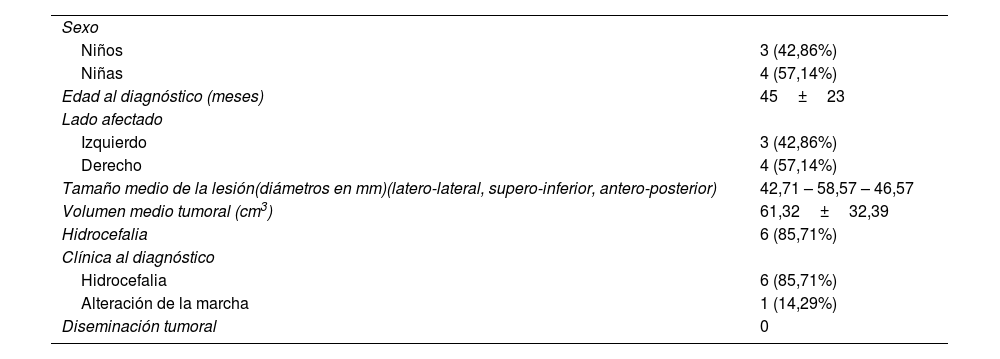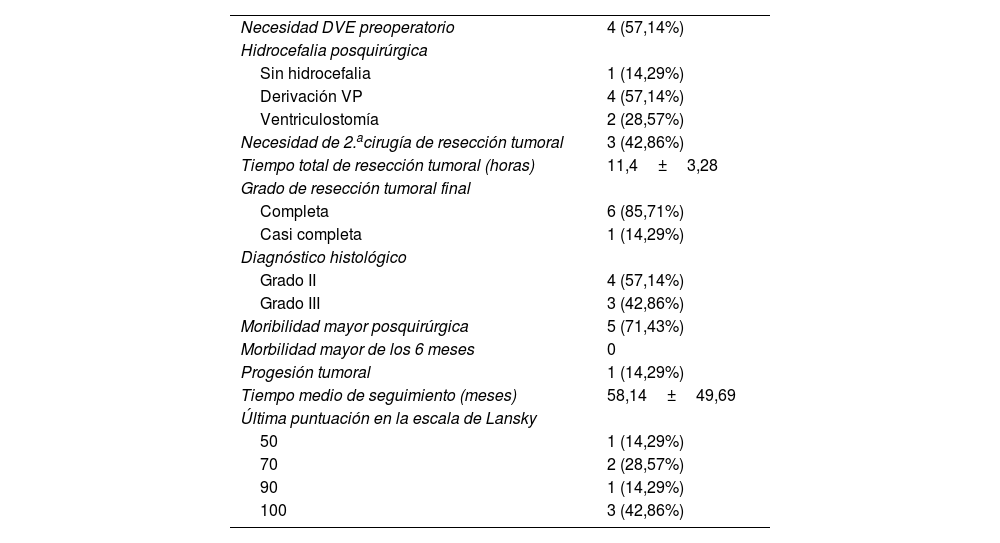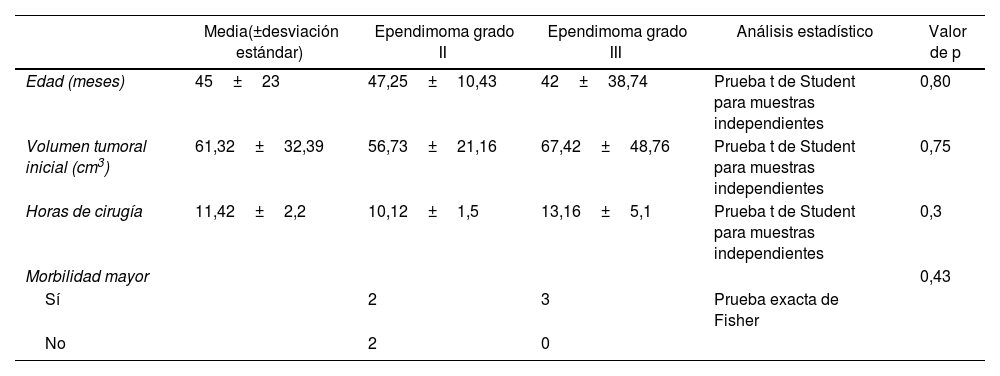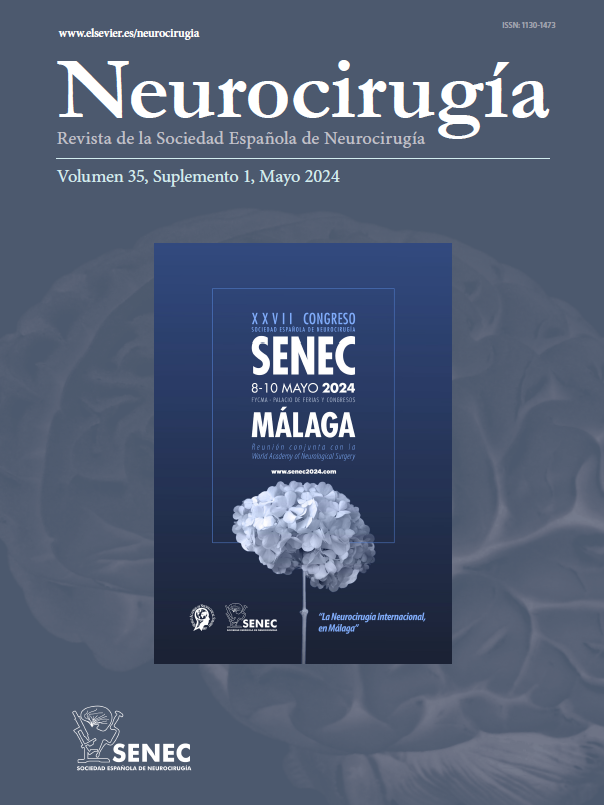Los ependimomas de fosa posterior de tipo lateral son un subtipo clínico e histológico característico, con un pronóstico poco favorable. Su incidencia es baja y su manejo quirúrgico es particularmente complejo. El objetivo del presente trabajo es revisar nuestra serie de ependimomas de fosa posterior de tipo lateral y contrastar nuestros resultados con la literatura disponible.
Materiales y métodosSobre una muestra de 30 ependimomas intervenidos en neurocirugía pediátrica en los últimos 10 años, se identifican 7 casos de ependimomas de tipo lateral de la fosa posterior. Sobre esta serie de casos se realiza un estudio descriptivo retrospectivo.
ResultadosLa edad media de nuestros pacientes al diagnóstico fue de 3,75 años. Seis se presentaron con hidrocefalia. El volumen tumoral medio al diagnóstico fue de 61cm3. En 6 casos se llevó a cabo una resección completa y en un caso una resección casi completa. Cinco pacientes precisaron de forma transitoria una traqueostomía y una gastrostomía. La media de seguimiento fue de 58 meses. Durante este tiempo se produjo un caso de recidiva que posteriormente evolucionó a muerte. Cuatro casos de hidrocefalia posquirúrgica precisaron una derivación ventriculoperitoneal de LCR y 2 casos fueron manejados con ventriculostomía endoscópica. En la última revisión en consulta 4 pacientes llevaban una vida normal y 2 mostraban una restricción leve de la actividad de acuerdo con la escala de Lansky.
ConclusionesEl objetivo del tratamiento quirúrgico de los ependimomas de tipo lateral de fosa posterior es la resección completa. Los déficits asociados a la disfunción de los pares bajos en nuestra serie fueron muy frecuentes pero transitorios. La progresiva caracterización molecular de estos tumores puede identificar diferentes grupos de riesgo sobre los que dirigir de forma adecuada la intensidad de los tratamientos adyuvantes.
Lateral-type posterior fossa ependymomas are a well-defined subtype of tumors both clinically and pathologically, with a poor prognosis. Their incidence is low and surgical management is challenging. The objective of the present work is to review our series of lateral-tye posterior fossa ependymomas and compare our results with those of previous series.
Materials and methodsAmong 30 cases of ependymoma operated in our pediatric department in the last 10 years, we identified seven cases of lateral-type posterior fossa ependymomas. We then performed a retrospective, descriptive study.
ResultsMean age of our patients was 3.75 years. Six cases presented with hydrocephalus. Mean tumor volume at diagnosis was 61cc. A complete resection was achieved in six cases and a near-total resection in one patient. Five patients transiently required a gastrostomy and a tracheostomy. Mean follow-up was 58 months. One case progressed along this period and eventually died. Four cases of hydrocephalus required a ventriculoperitoneal CSF shunt and two were managed with a third ventriculostomy. At last follow-up four patients carried a normal life and two displayed a mild restriction according to Lansky's scale.
ConclusionsThe aim of surgical treatment in lateral-type posterior fossa ependymomas is complete resection. Neurological deficits associated to lower cranial nerve dysfunction are common but transient. Deeper genetic characterization of these tumors may identify risk factors that guide stratification of adjuvant therapies.
Article

If it is the first time you have accessed you can obtain your credentials by contacting Elsevier Spain in suscripciones@elsevier.com or by calling our Customer Service at902 88 87 40 if you are calling from Spain or at +34 932 418 800 (from 9 to 18h., GMT + 1) if you are calling outside of Spain.
If you already have your login data, please click here .
If you have forgotten your password you can you can recover it by clicking here and selecting the option ¿I have forgotten my password¿.











